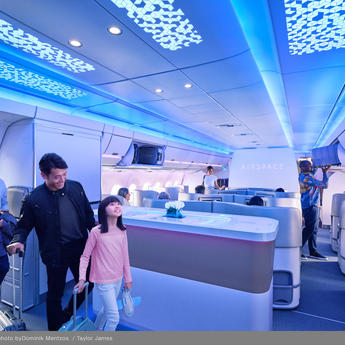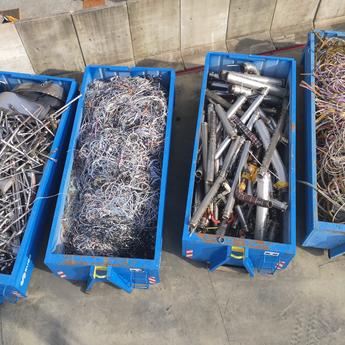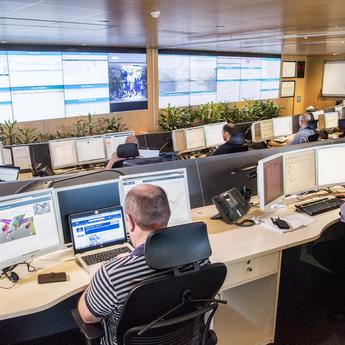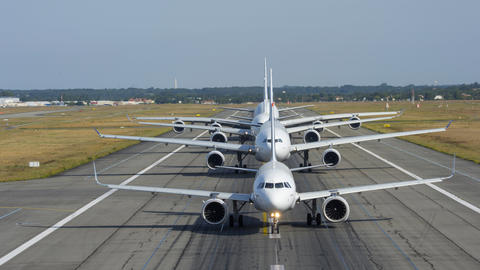The scope of the Chief Technical Officer (CTO)
FAST Magazine: So, Sabine, you are now in charge of both engineering for Commercial Aircraft, and technology company-wide. This is a pretty wide scope. Why group these two activities?
Sabine Klauke: Yes, not only is the scope wide but it also makes sense! One of our top objectives is to prepare for sustainable aviation. To do this – especially in these crucial times– we need the highest efficiency between the two teams who are driving key technology evolutions across our current and future product portfolios.
As we speak, our engineers and technology experts are supporting customers, improving products and services, and resolving in-service issues. At the same time, these teams are also looking ahead: innovating to improve and empower our industry, and exploring breakthrough technologies and out-of-the-box concepts.
Right now, it’s all about working as one. Which is why our goal is to bring together a single, cohesive team and a tightly-focused vision to speed up research and development of major solutions for aviation. This cohesion also extends to our colleagues in the Defence and Space and Helicopters divisions, with whom we are already testing new energy, connectivity and digitalisation systems, for example.
The future is now
Are we talking about incremental development here or something bigger?
Actually, it goes far beyond incremental development. Today our industry and society at large is faced with massive and, at the same time, very exciting challenges. Decarbonisation, for example, is a massive leap towards revolutionising the industry and making it more sustainable.
What are these technologies which will impact the aviation of tomorrow?
In the short-medium term we are working on continuously improving our aircraft structures, circularity of our materials (reusing and recycling where possible), and the performance of aerodynamics and the propulsion system, just to name a few. In the longer term, we are defining completely new energy and propulsion concepts based on hydrogen and electrification and the surrounding systems.
Last but not least, we are studying more advanced connectivity and new sustainable materials for the cabin to enhance the flying experience for passengers and crew.
So you see, we are working on many different, but ultimately complementary fronts!
What are some of the more immediate solutions you are working on to decarbonise aviation?
In fact there are already existing solutions which are delivering results today. For one, replacing ageing aircraft fleets with latest-generation aircraft has the ability to reduce emissions by 20-30%.
Then, we have Sustainable Aviation Fuels (SAF) which can be used by all current Airbus aircraft with a blend of up to 50%. Our aim is to enable 100% by 2030 and we have done test flights with 100% SAF on both the A350 and A319neo– proving that this goal is well within our reach! It is important to stimulate scaling up of SAF in order to bring the cost down and encourage change across the industry, which is why the CTOs of the industry have formed a united front to champion this effort.

We are also working with Air Navigation Service Providers (ANSP) authorities to optimise air traffic management and ground operations, and reduce inefficiencies in the air transport system such as aircraft waiting to land.
Looking further ahead, what technologies are you developing to become climate neutral by 2050?
Our ambitious objective is to be the first to introduce a zero-emission aircraft powered by liquid hydrogen by 2035. We are strong believers in the potential of hydrogen as a fuel of the future.

Other ideas we are looking at are extra-performing wings or totally new aircraft configurations like the “blended wing body” for a next generation, zero-emission aircraft. This new aircraft shape could bring fuel savings of up to 20% compared to current single-aisle models/configurations. Not only that, but the design could also open up new possibilities for different types of propulsion systems.

What needs to be done and who is involved?
Timing is of the essence– we need to understand and mature new technologies quickly to make them ‘industry ready’. To do this, we are counting on multi-functional teams who will tackle problems from different points of view and prototype solutions for quick results and decision-making.
This year, for example, we will have the first hydrogen system demonstrator running on the ground. Based on the outcomes, we will fly a first demonstrator aircraft by 2030. We will then also choose the right technologies for an aircraft configuration ready by 2035.
However, we certainly cannot do this on our own! We need the entire industrial chain to catalyze the step change. This involves airlines, of course, but also:
- research institutes, suppliers, technology specialists for design and development,
- airports and energy providers for the right infrastructure preparation,
- regulators and policy makers to ensure certification and also the industrial market readiness.
Bringing experience from the field
How is the customer part of the equation when Airbus works on design and technology?
The customer is a very critical part of the equation, in fact. Over the years, I have seen the delicate balance required between design and technology on one hand, and customer wishes on the other. As Head of Programme in Customer Services I met with many customers and understood first-hand the impact of design and technology on their operations.
Having started my career as a manufacturing engineer and working on the A380 and A350 design and industrial phases, I became acutely aware of how important it is to offer a mature and reliable aircraft to customers.
We will always need passionate engineers and innovators (they are also part of the equation) but we must never lose track of the customer and what value our products and services should be bringing to them.
Are you optimistic about the future of aviation?
Yes, very much so! We are in the midst of really stimulating times for our industry. This being said, our first priority at Airbus is to move out of the crisis and help get customers back to service. Then, we have this tremendous step change to pioneer towards the future of aviation and sustainability. With so many projects making progress, there are many reasons to be confident that aviation will achieve net zero emissions by 2050 if we all work in unison. I am so proud and excited to have a role to play in this journey!
Read more
FAST article: Exploring hydrogen - The impact, challenges and options : https://aircraft.airbus.com/en/newsroom/news/2021-09-exploring-hydrogen
Photos copyright Airbus. Photo credits: L. Borrel
Latest FAST articles
Continue Reading

Getting ready for A350 cabin retrofits
Web Story
FAST
The first A350s are reaching eight years in service, and the wave of cabin retrofits which is now starting will rapidly gain momentum over the next few yea
Turbulence alert - The collaborative network
Web Story
FAST
Intermittent repetitive failure
Web Story
FAST

End-of-life Reusing, recycling, rethinking
Web Story
FAST

In-flight health monitoring
Web Story
FAST

